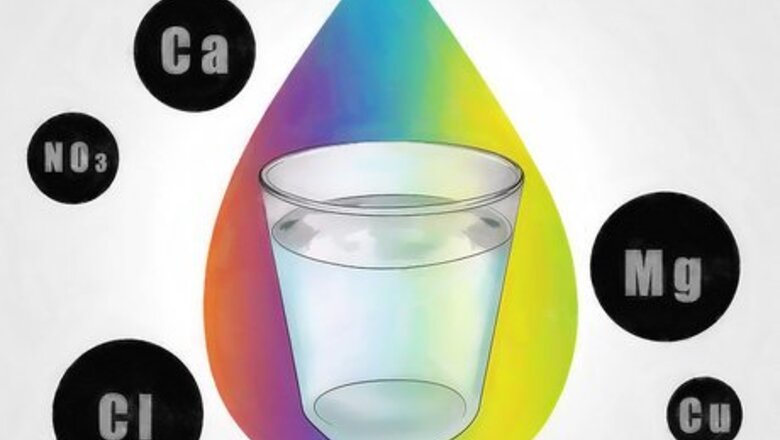
views
Using a Home Testing Kit
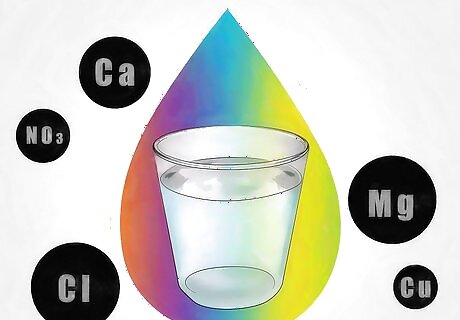
Understand what you will be testing for. The quality of water depends primarily on the concentration of bacteria, lead, pesticides, nitrites/nitrates, chlorine, hardness, and the water's pH. Chlorine aids in disinfecting; nitrates leached from fertilizers are harmful to infants; calcium and magnesium (“hardness”) can cause scale buildup in pipes; and water with very high pH levels (acidic water) can corrode fixtures.
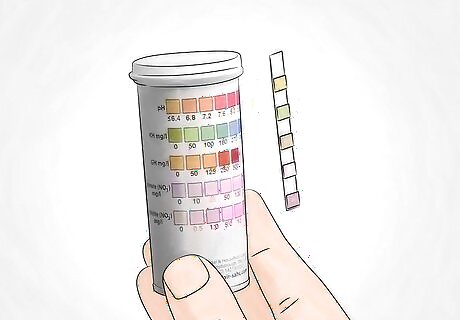
Purchase a home water quality test kit. There are many manufacturers of these kits, but they all function similarly. They will contain test strips that you will expose to water, causing them to change color based on the water's mineral content. You will then match the strip's color to a color chart. Look for a test kit that contains different strips for bacteria, lead, pesticides, nitrites/nitrates, chlorine, hardness, and pH. If a kit contains only a single kind of strip, it will likely be for testing pH only.
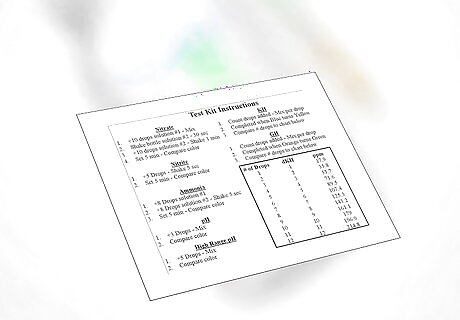
Read the directions. In your test kit, there will be some directions. These will explain exactly how long each type of strip should be exposed to water, as well as what temperature the water should be. These directions can vary from test kit to test kit, so even if you have done this before, it is crucial to read and follow the instructions.
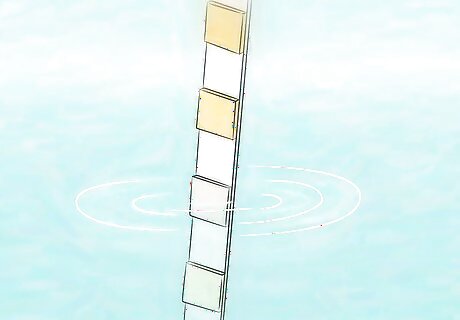
Expose each strip to water. Follow the guidelines in your test kit to expose each strip to water. Typically, you will start by filling a glass with room temperature water. Then, you will dip the strip into the water and keep it submerged for about 5 seconds, moving it back and forth gently.
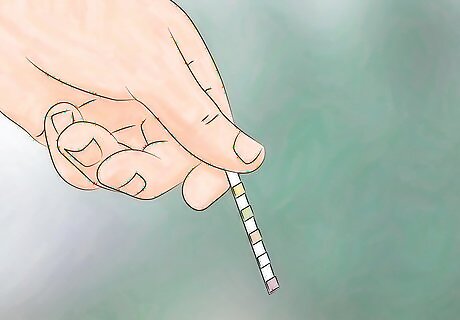
Remove the strip from the water. Pull the strip out of the glass and shake off any excess water. Wait for the strip to slowly change color, as you compare it to the color chart included with the testing kit.
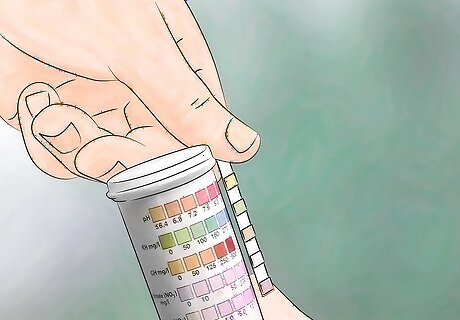
Determine the quality of your water. Compare each strip's color to the color chart to determine the level of each substance in your water. The color chart will designate different concentration levels as either acceptable or hazardous. If you register a hazardous result for any mineral, bacteria, or for pH, perform the test again to make sure that the result is not due to human error. If the test shows a hazardous result a second time, contact your local municipality.
Using Your Senses
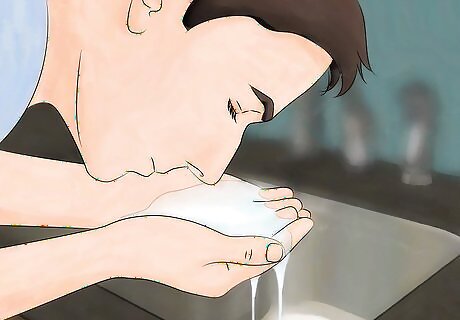
Smell the water. You can determine a great deal about the quality of your water by tuning in to your senses. Even if a professional water engineer were to come test your water quality, they would be sure to smell, taste, and visually examine the water. Test the quality of your water through your senses, first, by giving it a good smell. Bleach smell – This likely occurs from the chlorine your local treatment plant must add to your water to make it safe. This scent often dissipates if the water is exposed to air for a little while. Alternatively, you can purchase a home water filter to get rid of it. Generally, a bleach smell is not harmful. Rotten-egg smell – This sulfurous smell usually indicates a growth of bacteria. First, pour a glass of water and bring it to another part of the house, wait a few minutes, and then smell it. If the water no longer smells, then the bacteria is growing inside your drain and should be cleaned. If the water still smells strongly of rotten egg (and if this occurs with both hot and cold water), contact your local municipality. Musty or earthy smell – This smell is likely the result of organic matter decaying. Once again, this could either be inside your drain or in the water itself. Although this smell may be bothersome, it is most likely harmless. Follow instructions and record results. "The pictures showing each step helped me follow the instructions correctly. I could verify and record my results, which was so helpful. This guide could be used by any age — it even got my whole family involved in testing our water. The clear documentation ensured I didn't miss a step." - Kelly T. Learn multiple testing methods. "I appreciated learning the different ways to test the water — using senses, testing kits, and checking reports. Each method gave me new insights. The directions for smelling, tasting, and looking at the water were especially useful. This guide improved my understanding of water quality." - Kenny W. Pass science class using this water testing guide. "I used the detailed steps here for my 7th-grade science fair project on water purity. This article taught me how to test for bacteria, chlorine, acidity, and more. My project got top marks thanks to this guide. I never could have done it without these instructions." - Eliot D. Make water testing fun with smell and taste experiments. "I'm learning about water and really enjoyed this. The tips on what smells and tastes mean gave me cool ideas for science class experiments. Now, I know fun ways to test if water is safe to drink. This made a tough topic easy and engaging for kids." - Honey Ley T. We want to hear from you! Advice from our readers makes our articles better. If you have a story you’d like to share, tell us here.
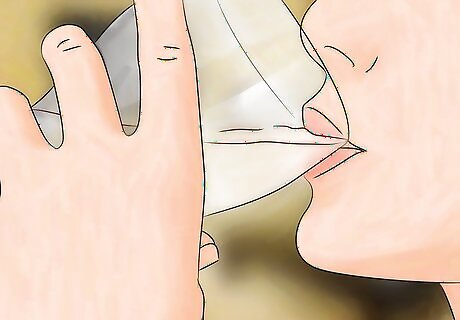
Taste the water. Use your taste buds to determine the quality of your water. First of all, if your water tastes very foul, spit it out! If your tap water has a metallic taste, this can be caused by either low pH levels, or excess minerals in your water supply (potentially due to rusty pipes). If your water taste like bleach, it could be an excess of chlorine. And if your water tastes salty, this could indicate the presence of chloride ions or sulfates, which could be caused by industrial waste or irrigation drainage. If the taste of your water offends you, contact your local municipality, or the Environmental Protection Agency (EPA).
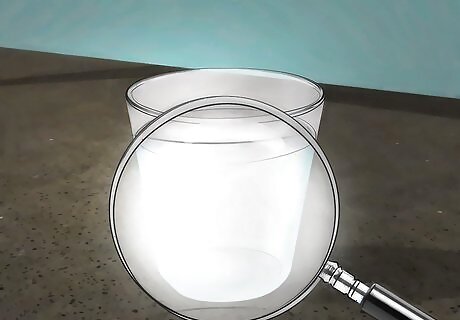
Check for cloudiness and particles. Hold a glass of water up to the light and look for floating particles or general cloudiness. Brown, orange, or red particles can be caused by rust in pipes or fixtures. Black particles can come from the hoses that your water runs through (chlorine in the water can deteriorate these hoses over time). White or tan particles (or general cloudiness) can indicate excess calcium carbonate or magnesium carbonate in your water. If you notice excess cloudiness or particulate matter in your water, contact your local municipality, or the EPA.
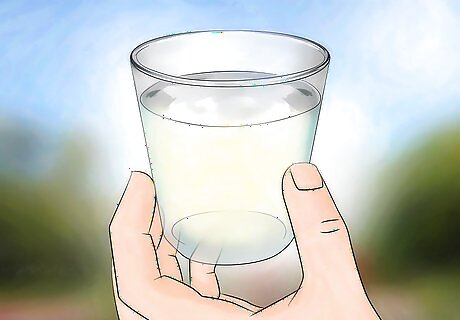
Examine the color. Begin examining the color of your water by first allowing the water to run for a few minutes. (This will clear any build up from standing water in your fixtures). Then hold a glass of water up to the light. Brown, murky, or otherwise discolored water can be caused by a few factors: a new water source for your area, upstream pollution, or rusty pipes. If the color of your water seems wrong to you, contact your local municipality, or the EPA.
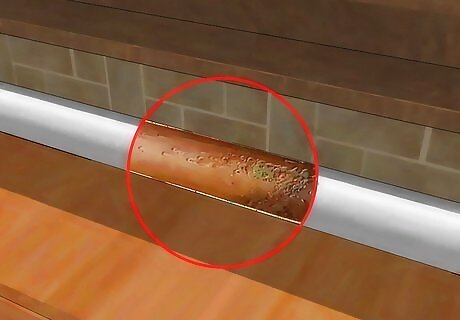
Check your pipes for corrosion or build-up. If your pipes have a great deal of corrosion or mineral build-up, it means that excess rust or other minerals have been getting into your water. There are a few ways you look for corrosion or build-up around your house. If your pipes have a great deal of build-up, have them looked over by a professional plumber and contact your local municipality. If your pipes are above ground, look for any areas that leak or have blue and/or white sediment. If your pipes are harder to get to, look inside your toilet bowl for rust, or around the base of your toilet for blue stains. If you are having any plumbing work done, ask to see inside a cut portion of your pipe. Look for blue, white, or rust-colored build-up.
Obtaining a Water Quality Report for Your Area
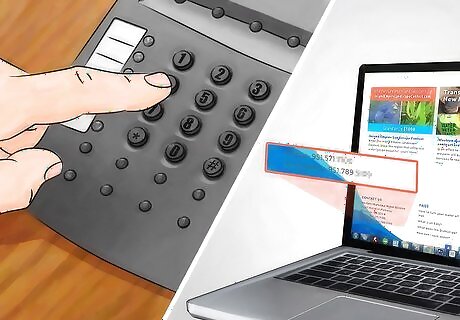
Contact the local municipality. Local water municipalities are required to test water quality regularly, and to make the results public and available each year. This data is compiled in the form of a “Water Quality Report,” you can test the quality of your water by obtaining a copy of this report. To do this, simply contact your local municipality.
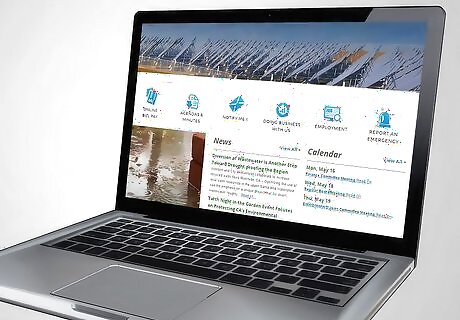
Visit the website for your city. Water Quality Reports will also commonly be available through the website for your town or city. Visit your local website, download a current Water Quality Report, and determine the quality of your water.
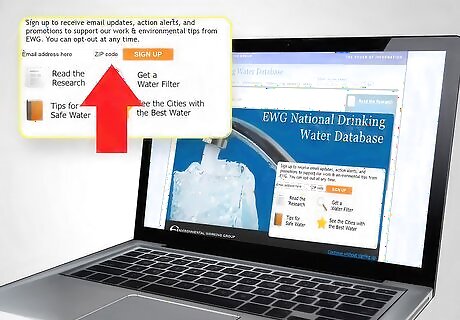
Search the National Drinking Water Database. This online database has compiled nearly 20 million records obtained from state water officials. Simply plug in your zip code and you can pull up Water Quality Reports for your area.
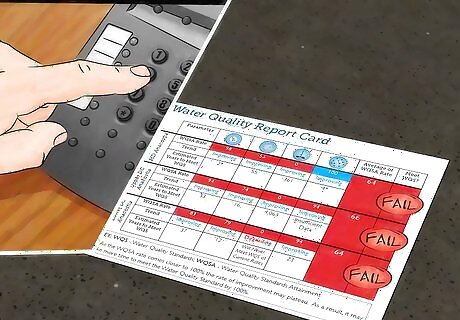
Call your village hall. Contacting your village hall can be another method for obtaining a Water Quality Report for your area. This can be a good option is you are not sure how to reach the local municipality. Your village hall can either provide you with the Water Quality Report, or inform you about where you can obtain one.
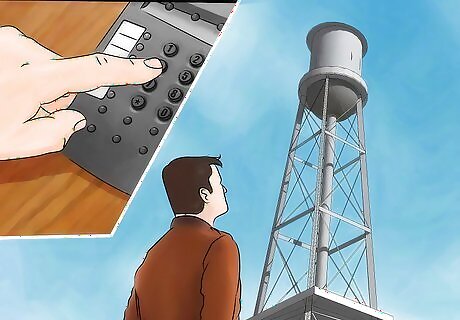
Contact your water company. Finally, another method for procuring a Water Quality Report in your are is to speak to your water company. A representative from your water company should be able to provide you with a current Water Quality Report, or at the very least, tell you where you can obtain one.




















Comments
0 comment